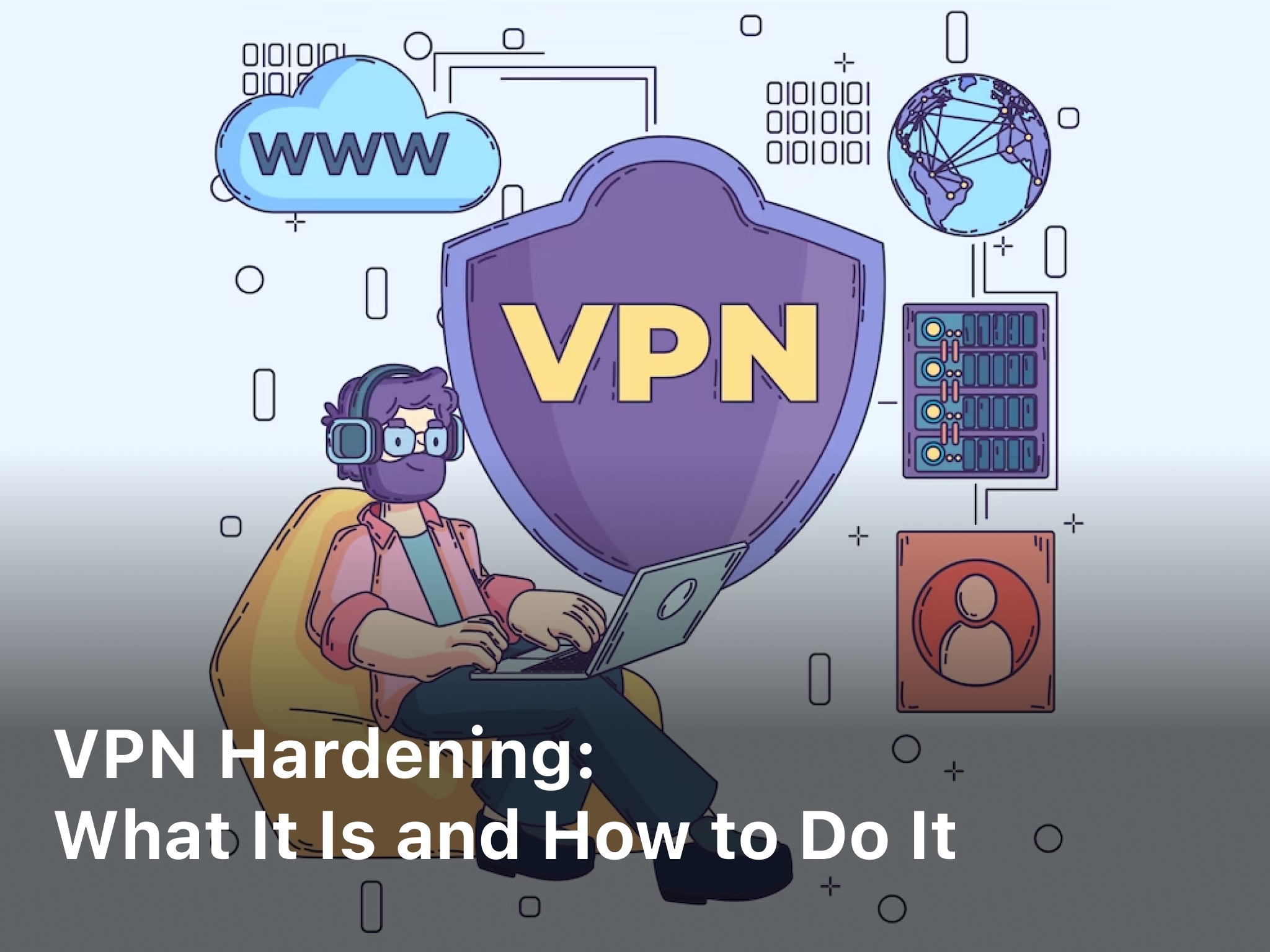VPN Hardening: What It Is and How to Do It
As a cybersecurity professional, you will understand the importance of properly configuring and securing all systems and software. Virtual private network or VPN is an important tool to provide remote access and connectivity, one with Private Tunnel VPN also allows users to hide their real IP address and replace it with VPN server IP address. but they also present potential vulnerabilities if not properly hardened. In this article, I will explain what VPN hardening is and provide guidance on the steps you should take to harden your VPN infrastructure. Strengthening your VPN is not difficult, but requires careful planning and consistent monitoring to implement properly.
By following industry best practices for VPN hardening, you can help reduce risk, protect sensitive data, and give you peace of mind that your network and systems are as secure as possible. With cyberthreats constantly evolving, hardening measures need to be an ongoing process, not a one-time set-it-and-forget-it event. Take some time now to evaluate your VPN solution and make improvements to protect your digital assets. Your organization’s security depends on it.
What Is VPN Hardening?
As an IT professional, I frequently get asked about virtual private network (VPN) hardening. VPN hardening refers to the process of securing a VPN to protect the data it transmits. It involves configuring the VPN to close potential security holes and vulnerabilities.
To harden a VPN, I recommend the following best practices:
- Use strong encryption protocols like IPsec or SSL. These provide robust security for VPN connections. Avoid weaker protocols like PPTP.
- Implement two-factor authentication (2FA) for VPN login. This adds an extra layer of security for user authentication. Options include one-time passwords, smart cards, and biometric authentication.
- Limit VPN access to specific users and user groups. Only provide VPN access to those who truly need it to do their jobs. This minimizes the potential attack surface.
- Restrict VPN access by location and device. For example, you may only allow VPN connections from company-owned devices or specific public IP address ranges. This makes the VPN a less attractive target.
- Disable split tunneling which allows users to access the internet directly rather than through the VPN tunnel. This prevents sensitive data from escaping the VPN tunnel.
- Enforce strong password policies for VPN users. Require minimum length, complexity, expiration, and history restrictions to make passwords harder to crack.
- Keep VPN software and firmware up to date with the latest patches. Outdated software and firmware represent vulnerabilities that can be exploited.
- Monitor VPN logs regularly for signs of unauthorized access or data breaches. Look for unknown or suspicious login IDs, source IP addresses, etc. This can help quickly detect compromises.
By following these best practices, you can significantly strengthen the security of your organization’s VPN and ensure sensitive data remains protected. Hardening your VPN should be an ongoing process as new threats continuously emerge.
Why Is VPN Hardening Important?
As an IT professional, I cannot overstate the importance of hardening your VPN. A vulnerable VPN exposes your network to significant risks.
Hardening a VPN involves several key steps:
- Use strong encryption protocols. Choose a protocol like OpenVPN, IKEv2, or WireGuard that uses 256-bit encryption or higher. Weaker protocols like PPTP are insecure and should be avoided.
- Enable two-factor authentication. Require two-factor authentication like OTP codes, security keys or biometrics for all VPN users. This adds an extra layer of protection for user accounts.
- Change default settings. Modify default settings like ports, encryption algorithms, and DNS servers. Default settings are well known and more easily targeted. Choose non-standard ports and diversify algorithms and servers.
- Restrict access. Only allow VPN access to authorized users and networks. Block access to and from suspicious locations and IPs. Monitor logs regularly for signs of unauthorized access attempts.
- Update firmware and software. Update VPN servers, firewalls, routers and all other network devices regularly. Outdated firmware and software contain security vulnerabilities that can be exploited if left unpatched.
- Conduct audits. Perform regular security audits of your VPN configuration and network. Look for weaknesses in encryption, authentication, access control and other areas. Penetration testing can also identify vulnerabilities before they are exploited.
Hardening and protecting your VPN is essential to securing your network and the sensitive data within it. Following security best practices can help ensure your VPN is locked down and less susceptible to compromise. With vigilance and consistent effort, you can have confidence in your VPN’s security.
Related Article : How can VPN Private Tunnel protect your internet privacy?
Best Practices for VPN Hardening
As the administrator of a VPN, securing and hardening it is one of my top priorities. There are several best practices I follow to strengthen my VPN:
Enable two-factor authentication
Two-factor authentication (2FA) adds an extra layer of security for user logins. It requires not only a password but also a one-time code sent to the user’s mobile device. I require all VPN users to set up 2FA to access the network.
Use strong encryption
A VPN uses encryption to secure communications over the public internet. I ensure my VPN uses a strong encryption algorithm, such as 256-bit AES (Advanced Encryption Standard) or better. The longer the key length, the harder it is to crack.
Change default settings
Default VPN settings are often not very secure. I change critical settings like the pre-shared key (PSK), SSL/TLS version, cipher suites, and ports from their default values. This makes the VPN less vulnerable to attacks targeting known default settings.
Restrict access
I limit which devices and users can access the VPN. This includes:
- Allowing only company-owned devices to connect to the VPN. Personal devices are not permitted.
- Setting user permissions based on the principle of least privilege. Users only have access to the resources they need to do their jobs.
- Requiring a unique VPN username and password for each user. Shared accounts are not allowed.
- Revoking access immediately for any terminated employees.
- Regularly reviewing user accounts and permissions to ensure there are no unused or outdated accounts.
Monitor and log VPN activity
I enable logging on my VPN to monitor user activity and watch for potential threats. I review logs regularly to check for any unauthorized access attempts or other suspicious behavior. Logs also provide an audit trail in case of a security incident.
Following these best practices helps ensure my VPN is as secure as possible from intrusion or compromise. Continuous monitoring and improvement is key to effective VPN hardening. I periodically re-evaluate my VPN’s security posture and make changes as needed to account for advances in technology and the evolving threat landscape.
How to Harden Your VPN Configuration
As a security professional, properly securing and hardening a VPN is one of my top priorities. A vulnerable VPN configuration can expose an organization’s network to cyber threats, data breaches, and other risks. To harden your VPN, there are several best practices I recommend following:
Use Strong Encryption Protocols
Choose a strong VPN protocol like OpenVPN or IPsec. These offer robust 256-bit encryption that is very difficult to crack. Avoid weaker protocols like PPTP which has known security flaws.
Enable Two-Factor Authentication
Two-factor authentication (2FA) adds an extra layer of security for user logins. Require 2FA for all VPN users to prevent unauthorized access. Options include one-time codes via SMS text or authenticator apps, security keys, and biometrics like fingerprints.
Restrict User Access
Only provide VPN access to authorized users and limit their access to only necessary resources. Use role-based access controls to restrict users to specific networks, devices, and services. Restrict the number of simultaneous logins allowed per user.
Monitor for Anomalous Activity
Perform regular monitoring to detect any abnormal VPN behavior which could indicate a security issue. Log VPN connections, data usage, connected devices and look for large file transfers, connections at unusual times, unknown devices, etc. Alert security teams to investigate any anomalous activity immediately.
Patch and Update Regularly
Keep your VPN servers and clients up-to-date with the latest patches and software versions. Security updates often contain critical fixes for vulnerabilities that could be exploited if left unpatched. Make updating and patching a priority to minimize risks.
Conduct Audits and Testing
Schedule periodic audits and penetration testing of your VPN infrastructure to identify any weaknesses or vulnerabilities before they can be exploited. Audits should include assessments of configurations, user access, logs, and patches. Penetration testing should try to compromise the VPN to find security holes that need to be addressed.
By following these best practices, you can harden your VPN configuration and better protect your organizational data and systems. But security is an ongoing process, so continue monitoring your VPN and making improvements to keep it properly hardened against threats.
Tools for Auditing Your VPN

As an IT professional responsible for network security, auditing and hardening my organization’s VPN is an essential part of my job. There are several useful tools I leverage to analyze, evaluate and strengthen our VPN.
Port Scanning
Port scanning tools like Nmap scan my VPN’s ports to detect any that are open or vulnerable. I use these scans to identify unneeded ports to close and ensure strong encryption protocols like OpenVPN or IPsec are used.
Vulnerability Scanning
Vulnerability scanners probe my VPN for any software flaws or weaknesses that could be exploited. I run scans with tools like OpenVAS to find and patch any critical vulnerabilities.
Packet Sniffing
To audit what data is actually being transmitted over my VPN, I use packet sniffing tools wireshark. By analyzing live packet data, I can verify that all communications are encrypted and any sensitive data is properly secured.
Encryption Testing
By running encryption testing with a tool like Kismet, I can confirm my VPN is using strong encryption standards like 256-bit AES to protect all data in transit. Weaker encryption could allow data leaks and must be addressed immediately.
Log Monitoring
Reviewing my VPN’s log files is key to ensuring there are no unauthorized login attempts or other suspicious activity. I enable verbose logging and monitor logs closely with a tool like Splunk to detect any anomalies that could signal a breach or attack.
Constantly evaluating and refining security controls is integral to a hardened VPN. With a combination of these tools and techniques, I work to maintain an impenetrable VPN that safeguards my organization’s data and resources. Staying up-to-date with the latest best practices for VPN security and continuing to audit with the tools at my disposal helps me fulfill my responsibility to provide the strongest network defense possible.
Conclusion
In summary, VPN hardening is a crucial security measure that should not be overlooked. By tightening access controls, enabling strong encryption protocols, restricting VPN user privileges, and monitoring VPN logs regularly, you can significantly reduce vulnerabilities in your network. While the hardening process requires time and resources to implement properly, the investment will pay off through enhanced data protection and reduced risks of breach or attack. As cyber threats become more sophisticated, VPN hardening is one of the best ways for any organization to strengthen its security posture and safeguard sensitive information. With vigilance and consistent best practices, hardened VPNs can serve as a formidable defense for years to come.




